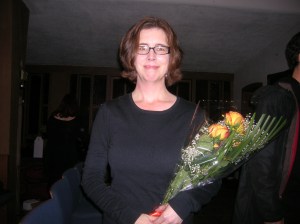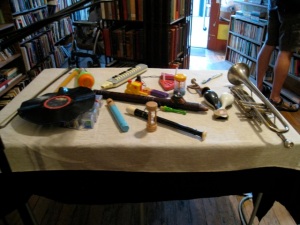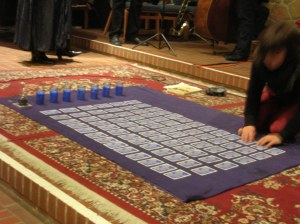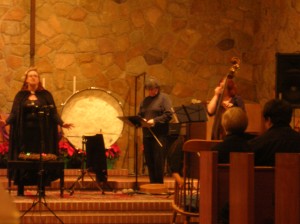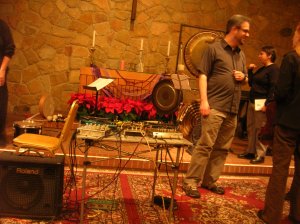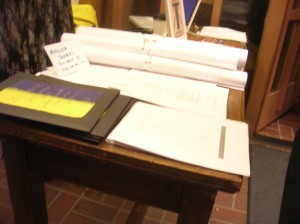Tania Chen, Wobbly, and Thomas Dimuzio will perform Triadic Memories at The Lab (2948 16th St., San Francisco) on Wednesday, Jan. 16 at 8:00 p.m.
Tania Chen and Jon Leidecker — Morton Feldman: Triadic Memories (Knitted, 2018)
Tania Chen (with Thurston Moore, David Toop, and Jon Leidecker) — John Cage: Electronic Music for Piano (Omnivore, 2018)

Tania Chen champions the piano music from the quadrant of Cornelius Cardew, Morton Feldman, and John Cage. It was one of her John Cage albums that inspired me to start writing something here. But then I found out Chen is going to be performing Morton Feldman’s 90-minute “Triadic Memories” with real-time electronics responses provided by Wobbly (Jon Leidecker) and Thomas Dimuzio. So I took a detour to hear her 2018 recording of the solo piano piece.
The composition is what you’d expect from late Feldman: lingering, drifting phrases, more relaxing than ominous, organized in delicate, spacious rhythmic doodles, and while you can run the piece as comforting background noise, you can also use the stillness to focus yourself into the moment, clinging to the notes and phrases against the deep silence. It’s also an interesting exercise in perception. The piece consists of arpeggios that spell out dissonant, prickly chords, but the melting-ice pace turns them into sparkling gems.
The added electronics are based on what’s coming out of the piano — Leidecker presumably attached microphones to the instrument, as he and Dimuzio will do in the Jan. 16 performance. On the CD, electronics appear sparingly, trying to accent the sound without being distracting. A passage starting around 17:20 includes a deep-water aftereffect. Another at around the 26-minute mark is more overt and mischievous but still doesn’t upset the overhanging atmosphere.
But that’s not really what I sat down to write about. I wanted to write about John Cage.
 As you’d expect from a Cage piece, there’s a game aspect and a touch of whimsy behind Electronic Music for Piano, and I think it’s more enjoyable if you listen knowing the rules. Producer Gino Robair recorded Chen performing the piece three times — in separate duets with Toop and Moore in London, and with Leidecker in Berkeley. The CD knits the performances together with help from a “chance-based system” deciding which sound sources would play at which times.
As you’d expect from a Cage piece, there’s a game aspect and a touch of whimsy behind Electronic Music for Piano, and I think it’s more enjoyable if you listen knowing the rules. Producer Gino Robair recorded Chen performing the piece three times — in separate duets with Toop and Moore in London, and with Leidecker in Berkeley. The CD knits the performances together with help from a “chance-based system” deciding which sound sources would play at which times.
“Sound sources” seems to include not just the six players (counting Chen three times) but also multiple angles, as microphones were all over the place — under the piano soundboard or at different points in the room, all to capture the mix of sounds persisting in air. Pure silence counted as a source and was weighted into the system, as were special options for “piano tracks only” and “non-piano tracks only.”
The overall mood is a fuzzy darkness: Lots of buzzing and roaring (not just Thurston Moore, but also the amplified piano soundboard), alternating with plinks and plucks from the piano, alternating with thick silence.

About the silence — you don’t put on a John Cage record if you can’t tolerate silence, and this one delivers, with slabs of blankness lasting one to three minutes. “Silence” also factored into the original performances. One silence at around the 8-minute mark is broken by the tiniest flicker of piano strings, almost accidental. That, and the organic way in which the piano sound returns, suggest this was “organic” silence — a very quiet moment that really did happen in the studio.
That said, Thurston Moore’s roar tends to dictate the tone at any given moment — especially in the early minutes, where he’s either ON or off. Much as I enjoyed the chance aspect of the recording, I have to admit it creates jarring results, especially when the guitar kicks in or out. Take the excerpt below, for instance. In the spirit of the recording, I’m starting it at exactly the 15-minute mark, and it includes two silences of roughly one minute apiece.











